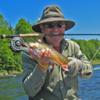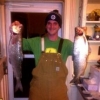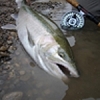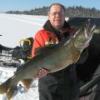-
Posts
206 -
Joined
-
Last visited
About Guidofisherman

Contact Methods
-
Website URL
http://members.shaw.ca/amuir
-
ICQ
0
Profile Information
-
Gender
Male
-
Location
Thunder Bay
-
Interests
Brook Trout, Coasters, brookies, salvelinus fontinalis...OH Yeh, steelhead and most any other type of fishing, including flyfishing and fly tying. I have other hobbies, but I can't think of any right now.
Guidofisherman's Achievements

Almost a Guide (5/10)
0
Reputation
-

A Spring So Far From TROUT to GAR!!!
Guidofisherman replied to Moosebunk's topic in General Discussion
Always one of my favourite reads. Enjoyed the family trip, fishing adventures and boat pimp. By the way...the fish'n trip with your mentor is now set. Hope to make it a success for him. -

Chasing the Arctic Sun to BIG Lakers.
Guidofisherman replied to Moosebunk's topic in General Discussion
What an excellent read. While most of us can't wait for winter to pass, you shared the beauty of life in the True North. This is a sense of "Arctic community life" most of us will never visit, but now appreciate. With heart-wrenching stories of some northern communities in the news lately, your tribute is a testament to the fact that, "the glass is neither half full nor half empty", rather it can be refilled with wonderful memories. Thanks for sharing this positive attitude. -
Alternatives for the North
-
Wow, that was a two coffee read. Very interesting story about a guide's life. Your medical skills sure came in handy. I'll tell you my similar experience on a canoe trip sometime over a "wobbly pop". It never fails to disappoint me how bullies are allowed to operate. My compliments for taking the high road. Great photos by the way. Any explanation on how the round circles on the rocks were formed?
-

Anyone planning to fish downstream from Montreal?
Guidofisherman replied to John Bacon's topic in General Discussion
-
With the Brook Trout fishing over, I finally put together a short video trailer for 2015 season. It includes some funny video and release shots that normally don't make the cut. All the fish were caught and released while fly fishing. Most of the fly fishing on the Nipigon is done using streamers with heavy sink tips to get down in the current, but this year we had some success with dry flies. Can't beat a take on the surface. Got my personal best brook trout this year also. Measured just over 25" with a 17" girth and weighed 8.5 lbs. This fall I ran into Moosbunk at one of the popular spots and the fish were colouring up for their spawning as shown in the photo below. Also had to post one of my signature "pop-out" photos. 2015 Video Trailer
-
I have been waiting for this report and wasn't disappointed. You were right saying, "Speckers here, speckers there, bloody speckers out fishing everywhere." It seems to be getting more crowded each year. At one favourite spot, a boat pulled up near mine and shouted, "Hey Al, I've never seen your boat so dirty". For an O.C.D. person like me, I got a real laugh out of your comment. I think the windy weather had a part in grouping up the anglers also. At that time of the year you can expect a few days of wind that might drive you off the lake or at least reposition, but this year was especially rough. Makes it tough to fly fish. Really nice photos!!! Especially like the BT closeups and the sunset shots. Great selfie. Already looking forward to next year and maybe then my boat will be just as dirty but with fish slime.
-

A Solo Roady North II. "Fishin' Impossible."
Guidofisherman replied to Moosebunk's topic in General Discussion
WoW...you sure have some epic trips. I can appreciate the time, energy and cost of experiencing such an adventure. The story shows your passion for the north and respect for the beauty it has to offer. But I must say I'm disappointed...only one speck photo? I know, you can't share everything. Thanks for the great read. Alan- 49 replies
-
- Big Lakers
- Pike & Walleye
-
(and 1 more)
Tagged with:
-

Attawapiskat Taiga Trekkin' 2015. (NF Report)
Guidofisherman replied to Moosebunk's topic in General Discussion
What an enjoyable read. Loved how you turn the cold north winter into a a positive experience to be celebrated. While I'm a little one dimensional, I appreciate your diversity of out door experiences. Thanks for sharing. -
You are absolutly right that the key is proper fish handling and that includes the amount of time you play the fish, time out of the water, grip and revival. It even includes equipment choice like trebles vs singles, and line weight so you are not just haul'n them in'. About the 9 dumb fish...as Craig questioned, "just how many times are these fish actually caught?" I have often wondered that myself given that my recapture data is only for 2 'taggers' and doesn't include the times that fish is caught and released by other anglers. We do need to make a point of getting together next year for a sit down chat rather than just pass each other in our boats whispering, "look at that, he just caught another one!" I also agree it is as bit disappointing to catch a fish with recap damage or even a tag in it, thinking we are in pristine waters, but at least we seem to be catching more and bigger average fish. Now if I could only find that world record fish???
-
Opps....forgot to hit the multquote button. The state of the MNR has degraded significantly over the years. We have allowed politicians to reduce budgets and change priorities from sustainability issues based on data to an organization forced to justify those political decisions. It is up to the fishing clubs and organizations to influence change and hold those in charge accountable. Volunteers like myself can be helpful, but we are not biologists. As for the brook trout fishery in the Sault area...I can only agree that there once was a significant popultion there at the turn of the century. Regretably, I suspect we can only hope for a minimal improvement if we address the anthroprogenic issues that got us into the decline.
-
The recapture rate that I posted is for fish caught over multiple years, sometimes over 3 or 4 years. This has often shown a growth of up to 3 inches per year, but it tapers off as the fish matures and puts more energy into bulk rather than length. The MNR biologists however, determine recapture rate from within the same year. I am told this provides a better determination for population estimates. Yes, I think angling samples most year classes equally, although I doubt for the smolt or younger fish. In this habitat, it is rare to catch a fish under 8 inches. Basically, the baits and techniques have remained constant over the years, but if you look at the graphs, you can see the average size changes from year to year in a cycle of growth. Most fishermen don't purposely target smaller fish with their baits or techniques but, it is beneficial to tag the younger fish in the hopes of recapture to determine population estimates of size, numbers etc. The one thing I have noticed that is not in the MNR report is that my data clearly shows that the larger fish get the better feeding locations. Because I record the specific locations of each fish caught, when it is caught again, I can track its movements. Generally, as a fish grows, it moves to the better spots ...a real pecking order. It just proves something that most fishermen already know. I'm talking over multiple years, not just seasonal shifts or water temperture changes. Is a recaptured fish a tagged fish?, from that same year, or from the length of the study? Do you think angling samples all year classes equally? Baits and techniques might be more appealing to certain sizes of fish.
-
I finnally got around to tabulating the tagging results for the past year and will likely be the last such report. It ended up being a bit of a frustrated rant, but I decided to post anyway. Brook Trout in the Nipigon system have gone through significant changes over the past 100+ years. Since the glory days of the “Gentlemen Anglers”, populations reached an all-time low in the 80’s due to anthropogenic factors like increased fishing pressure, habitat destruction, and introduction of exotic species. While it would be great to return to the pristine brook trout fishing of the past, we must work together as fishermen and biologists to establish practices and conditions to ensure the future of this marvelous fishery for all to enjoy. Whether we like it or not, these fish are managed by the MNR and regulation changes need to be based on facts and data to protect the species from us. Regulations went from 15 fish or 10 pounds prior to 1979, to 2 over 18” , then 1 over 20” in 1997 and eventually to 1 at 22” in 2005. I chose to be a part of the solution and gather the raw data through the tagging program (formally known as ‘The Co-operative Angler Program’) to see if the regulation changes made a positive impact. Although the program started in 1997, for the past 11 years, I and a few other brook trout enthusiasts have been gathering data about the fish we catch and forwarding it to the MNR biologists for analysis. Recaptured tagged brook trout allowed for the calculation of growth, movement, recapture rate, and population size. Generally, the data gathered included if possible: fish length, girth, weight, date, general location, sex, and fish health. Here are the combined results of the 2014 year for several of us only and does not represent the total data gathered by other anglers or the MNR. 2014 data: (red graph) 120 fish tagged 20% of the population measured 20" (highest spike) 43% of the population measured 19-21 " (3" range spike) 18.8” is the average length 27 recaptures or 22.5% of the annual population 9 fish recaptured multiple times within this year 8% of tagged fish were 22" or greater 5% fish had mouth damage,hooks removed or lost maxilla plates My tagging results of all 11 years are located here: http://members.shaw.ca/amuir/catchcharts.html Thanks to the MNR biologists and staff that compiled this comprehensive 74 page document called, “Update on Brook Trout Rehabilitation in the Ontario waters of Lake Superior, Lake Nipigon, and the Nipigon River: Public Workshop Proceedings http://www.thegreaterlakesuperiorfoundation.org/pdf/2011CoasterWorkshopProceedingsFINAL.pdf These are a few of my personal highlights and interpretations of this data for South Bay in Lake Nipigon and the upper stretches of the Nipigon River since the 2005 regulation change to 22": 87% of the spawning population is now protected catch rate has improved in certain areas the number of spawning fish has doubled yet remains at 25% of the management levels from the 1930’s 95% of all fishermen now use some form of “catch and release” high recapture rates show brook trout in these areas are vulnerable to angling, but also indicates that these fish respond well to catch and release when performed properly. an increase in the number of fish caught that have mouth damage, hooks removed or lost maxilla plates generally, there are more fish and they are bigger There are still a lot of unanswered questions and challenges for the Nipigon brook trout without even getting into the plight of Lake Superior Coasters. History has shown over fishing, environmental abuse and decline, and while the species is still fragile, there are signs of improvement. Here are a few recommendations from the report: participants expressed concern over limited information available for Lake Superior brook trout collect more information on both brook trout populations (abundance, size, & distribution), and their associated sport fisheries (angler catch & harvest) brook trout in the upper reaches of the river and Lake Nipigon are a separate population and therefore, should have its own management plan a formal research plan should be developed that includes a brook trout life history study and sustainability goals goals should be prioritized for monitoring, assessment, research and management actions for long term preservation of the species refine and expand programs like the Co-operative Angler Program, Creel Survey studies and Education programs These can’t be answered without planned actions, research and programs to ensure brook trout sustainability. Since the 74 page report was released in 2011, to my knowledge, no additional information has been released by the MNR or communicated actions taken on the recommendations. The MNR continues to experience cut backs to programs and personnel and I want input as part of the fishing public. With the retirement of Nipigon biologist Rob Swainson after 30+ years, The Co-operative Angler Program seems to have run its course and is now in limbo. It has been a lot of work for me and others, but I felt it was necessary to contribute rather than just sit back and complain about the condition of our fishery. After all, what is the alternative for making sustainability decisions? The program was about gathering data to make informed decisions and educate, not about personal glory or bragging any more than someone who publishes a “grin” shot, as we all do from time to time. I tried to do my part and contribute, but now it is time to just enjoy the fishing. …and what are you doing?
-
brook trout
-
Nice winter fishing trip. My compliments on their release.






